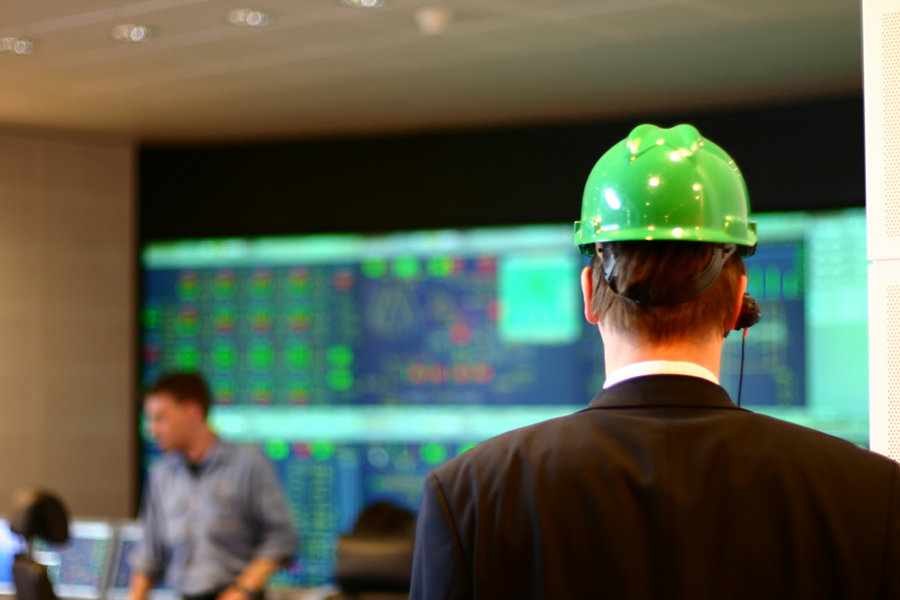November 7, 2011


While few consumers understand how a Smart Grid works, it has the potential to transform the way we generate energy. From the beginnings of energy-regulating grids to going open source, to getting hundreds of companies to work on refining it, this technology is growing in a way that promises to revolutionize our energy consumption. (Photo © Jean Schweitzer | Dreamstime.com)
[nggallery id=38 template=carousel images=8][imagebrowser id=38] Editor’s Note: This is the first of three stories about the Smart Grid.
By Debra Atlas
Few consumers really understand what the Smart Grid is. Newspapers keep churning out stories about it, but these stories may leave you wondering why you should care about it. The how’s and why’s of the Smart Grid are both complex and important to understand, but let’s focus on the “what” first.
The intent of the Smart Grid is to allow utilities and consumers to monitor and adjust electrical use on a continual basis. That will involve a stable national Smart Grid and the installation of SmartMeters.
The idea of an energy-regulating grid has been around for a few years. First, the Electric Power Research Institute (EPRI) started a project to use an open network to integrate data networks and equipment so that the devices and their systems could communicate. This project, which was called the IntelliGrid, focused on creating the grid itself.
Around this same time, IBM was creating their Intelligent Utility Network for smart networking. It was designed to connect all parts of the utility company: its equipment, control systems, applications, and employees. This way, the network could automatically collect data from all of these sources and deliver system performance that is efficient and reliable.
Andres Carvallo, the man who coined the term “Smart Grid” in 2004, also was instrumental in its creation. Carvallo was the chief architect of the first grid to be successfully used in the United States. Both the IntelliGrid and IBM’s Network were similar, says Carvallo. He saw the need, however, for an open-source version of this network. Thus, the Smart Grid was born. It would be free and everybody could use it.
“The Smart Grid,” says Carvallo in a guest post, “is the integration of an electric grid, a communications network, software, and hardware to monitor, control, and manage the creation, distribution, storage, and consumption of energy. The Smart Grid of the future will be distributed, interactive, self-healing, and will reach every electric device.”
Many consumers want to use energy more efficiently, but Carvallo says this is not why we need such a Grid. Currently, the way we are generating electricity (nuclear aside) is by burning something (wood, oil, gas, or coal) to boil water, which then creates the steam needed to turn turbines. “We have a short-term issue with not enough supply for the demand that’s coming our way,” he explains.
In Carvallo’s latest book, The Advanced Smart Grid: Edge Power Driving Sustainability, he outlines two types of energy economies: the fuel-based economy and the technology-based economy where everything is energy.
Over the next 20 years, we need to transform ourselves into that new, unlimited energy economy, according to Carvallo. Energy will be abundant across the planet at an inexpensive price.
“The Smart Grid,” says Carvallo, “is a platform that enables that transformation. … Without a Smart Grid, you’ll have a hard time bringing in renewable energy to the grid regardless of where it’s created. The Grid needs to be intelligent because we need abundant energy.”
To break it down and look ahead at the same time, consider this scenario: If consumers suddenly demanded and were able to get the number of electric cars we wanted, we would not be able to support them all! Currently there is insufficient infrastructure nationwide to support and power that many electric cars. That is where this Grid comes in, according to Carvallo. What needs to happen next is just what happened to the Internet. It started with a few people at the university level using it, then everyone started using it.
Currently, more than 1,000 companies worldwide are working on solving the problems involved with creating the Smart Grid.
“The genie’s out of the bottle. The question isn’t if [we’ll get a Smart Grid],” he says, “[it’s] when.”
Check out more articles by Debra Atlas.
© 2011 SCGH, LLC.
]]>